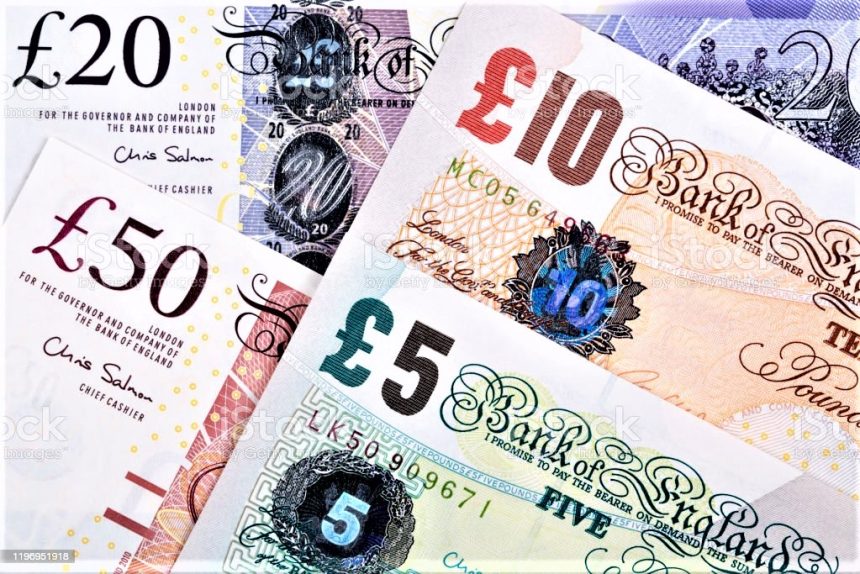The Pound Sterling (GBP) extended its winning streak against the US Dollar (USD) on Thursday, buoyed by dovish remarks from the Federal Reserve’s New York President John Williams and a weakening Greenback. The GBPUSD pair climbed near 1.3520, gaining momentum ahead of critical US economic data releases, including the second estimate of Q2 GDP and the US PCE Inflation report.
This rally reflects shifting market sentiment as investors anticipate possible rate cuts from the Fed while maintaining expectations that the Bank of England (BoE) will keep its monetary policy tight for an extended period due to persistent inflationary pressures in the UK.
Dollar Weakens as Fed’s Williams Opens Door to Policy Easing
The US Dollar Index (DXY) slipped to around 97.90, weighed by dovish tones from the Fed. In an interview with CNBC, John Williams emphasized that the US economy is in a phase of adjustment and that risks are now “more balanced.”
While he refrained from explicitly committing to a September rate cut, his remarks hinted that policymakers are open to easing if incoming data continues to signal slowing momentum.
“We are going to just have to see how the data play out,” Williams said, signaling a cautious but open stance toward a dovish pivot.
The comments reinforced growing market expectations for a September rate cut, with CME FedWatch now pricing in an 87% probability of a policy shift. This sharp repricing is one of the primary drivers behind the Dollar’s ongoing weakness.
Political Turmoil Adds Pressure on the Greenback
Adding to the market unease, Fed Governor Lisa Cook’s termination by President Donald Trump continues to dominate headlines. Cook, who has vowed to file a lawsuit against her dismissal over alleged mortgage-related issues, has sparked renewed concerns over the independence of the Federal Reserve.
Political interference in monetary policy has historically triggered risk aversion and weighed on the Dollar, amplifying bearish sentiment in the currency markets.
UK Inflation Keeps BoE on Hold
While the Fed is leaning dovish, the Bank of England remains firmly in a wait-and-watch mode. Inflationary pressures in the UK have been persistently high, with the Consumer Price Index (CPI) climbing 3.8% YoY in July, accelerating for the third consecutive month since May.
This trend has prompted BoE officials, including MPC member Catherine Mann, to advocate for maintaining current rate levels for an extended period. On Tuesday, Mann underscored the importance of a cautious approach:
“Price pressures appear to be persistent, and cutting rates prematurely could undo the progress made in curbing inflation.”
This policy divergence a dovish Fed versus a steady BoE continues to support the GBPUSD pair, providing Sterling bulls with a fundamental advantage.
Upcoming Data: US GDP and PCE Inflation in Focus
The near-term trajectory for the GBPUSD pair hinges on key US macroeconomic releases:
Q2 GDP (Second Estimate): Scheduled for 12:30 GMT, consensus expectations suggest an upward revision to 3.1% annualized growth, compared to the preliminary estimate of 3.0%.
US Initial Jobless Claims: Forecast to edge lower to 230K, signaling resilience in the labor market despite slowing GDP growth.
PCE Inflation Data (Friday): The core PCE index, the Fed’s preferred inflation gauge, is expected to rise 2.9% YoY in July (up from 2.8% in June) and 0.3% MoM.
If the inflation data meets or exceeds expectations, it could temporarily support the Dollar. However, softer figures could cement market bets for a September rate cut, potentially propelling GBPUSD even higher.
Pound Technical Outlook
From a technical perspective, GBPUSD maintains a bullish bias:
Support Levels: Immediate support lies at 1.3480, followed by 1.3420.
Resistance Levels: The next key resistance zone is around 1.3550, with a breakout paving the way for a move toward 1.3600.
Momentum Indicators: The Relative Strength Index (RSI) remains above 60, signaling strong bullish momentum but also raising the risk of near-term profit-taking.
For traders, sustained consolidation above 1.3500 would confirm the upward bias, while a dip below 1.3420 could signal a short-term correction.









